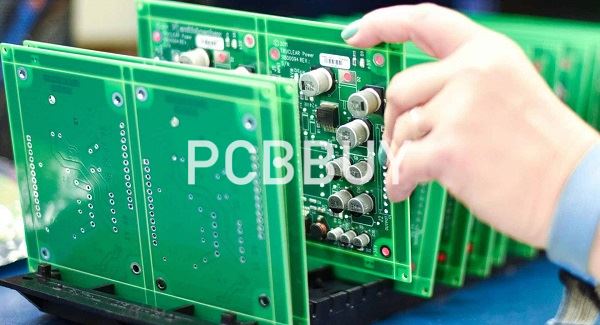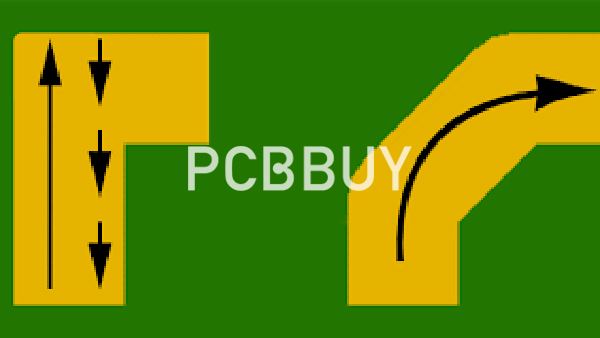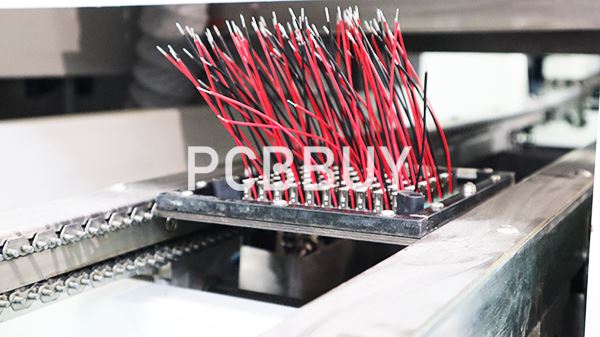What is Acid Trap in A PCB & How to Solve It?
By:PCBBUY 01/13/2022 10:25

An acid trip is a common mistake that many PCB designers make. Sometimes they commit the error unknowingly, but it still ends up impacting the board’s performance. So it would help if you were careful not to provide room for the development of acid traps.
In this passage, we are providing all the information of acid trip PCB. Please check and rea the content below in this passage.

What is the manufacturing process of Acid Trap in A PCB?
Before we can explain what an acid trap is, it helps if you’re familiar with a critical step in the PCB manufacturing process: etching.
Ever wonder how the traces in your design are placed on a physical PCB? While it might look like those copper traces are drawn on an empty slab of fiberglass, in reality they are etched out of a uniform copper surface using chemical solvents.
· A typical DIY etching process might look something like this:
· Start with a clean board of fiberglass (e.g. FR4) plated on one or both sides with copper.
· Transfer the PCB trace layout to the copper surface with an etch resist or toner.
· Dip the board into a bath of etching solution to remove the excess copper not protected by the toner.
· Clean the board of excess etching solution and dry it.
· Remove the toner to reveal clean copper traces on fiberglass board.

What are the causes of Acid Trap in A PCB?
Due to their potential for damage to a PCB, knowing the causes of acid traps is a necessary step. It can help you and your team more effectively prevent them from occurring and understand why they form. The sources behind acid traps include the following.
Traces that meet at acute angles:
Traces that join at particularly acute angles are a frequent culprit for creating acid traps. Acute angles are those under 90 degrees. Even at 90 degrees, sharp corners can pose a significant risk in acid trap formation. Designers typically avoid these and instead opt for a smoother curve. It might sound easy enough to avoid making right or small angles, but they often appear when joining two traces together. They can easily slip by even experienced designers. Take care to avoid these small angles and be aware of the possibility whenever joining traces.
Minimal gaps between pads, traces and vias:
Any space that is too small can lead to acid traps. These gaps are a common way to get a short circuit in the manufacturing process. Extra acid can seep into the traces and cause corrosion to those areas. This trace corrosion is a particular concern if your traces are thin, as there is less copper that needs erosion to open the circuit. Another issue here is that the traces can join together during manufacturing, leading to shorts. Depending on your design, leaving several mils between components is usually enough to eliminate the possibility of acid traps. Most PCB design software can help you by defining this value automatically. Don’t neglect the space between the copper and the edge of the board, either.

Isolated copper islands:
Copper areas that don’t have any real use are called isolated plane islands, copper islands and dead copper. Sometimes, designers leave these copper portions unetched to use fewer chemicals in the manufacturing process. Other times, they slip by unnoticed and unintended. These islands can cause issues regarding signal interference. Plus, they are perfect spots for acid to become trapped in the etching process. Be sure to remove any of these islands. They’re not difficult to get rid of, as many PCB design programs come with options to remove these dead copper areas automatically. It’s an easy fix, so take care to eliminate them to ensure fewer opportunities for acid traps to spring up.
System errors:
In some operations, automated design software is a lifesaver. People working with exceptionally high volumes of PCBs can miss acid trap problem spots and rely on software to help them catch their presence. Unfortunately, these kinds of programs are not perfect. They can still create acute angles and gaps that are too small. Usually, acid trap risks are created when the software’s settings aren’t properly adjusted. Be sure to appropriately define rules before designing. Design rule checking, while typically quite good at catching acid traps, can sometimes miss things too. Always double-check a design after DRC programs run because certain features could spell trouble for a PCB if left in place.
Industry Category











